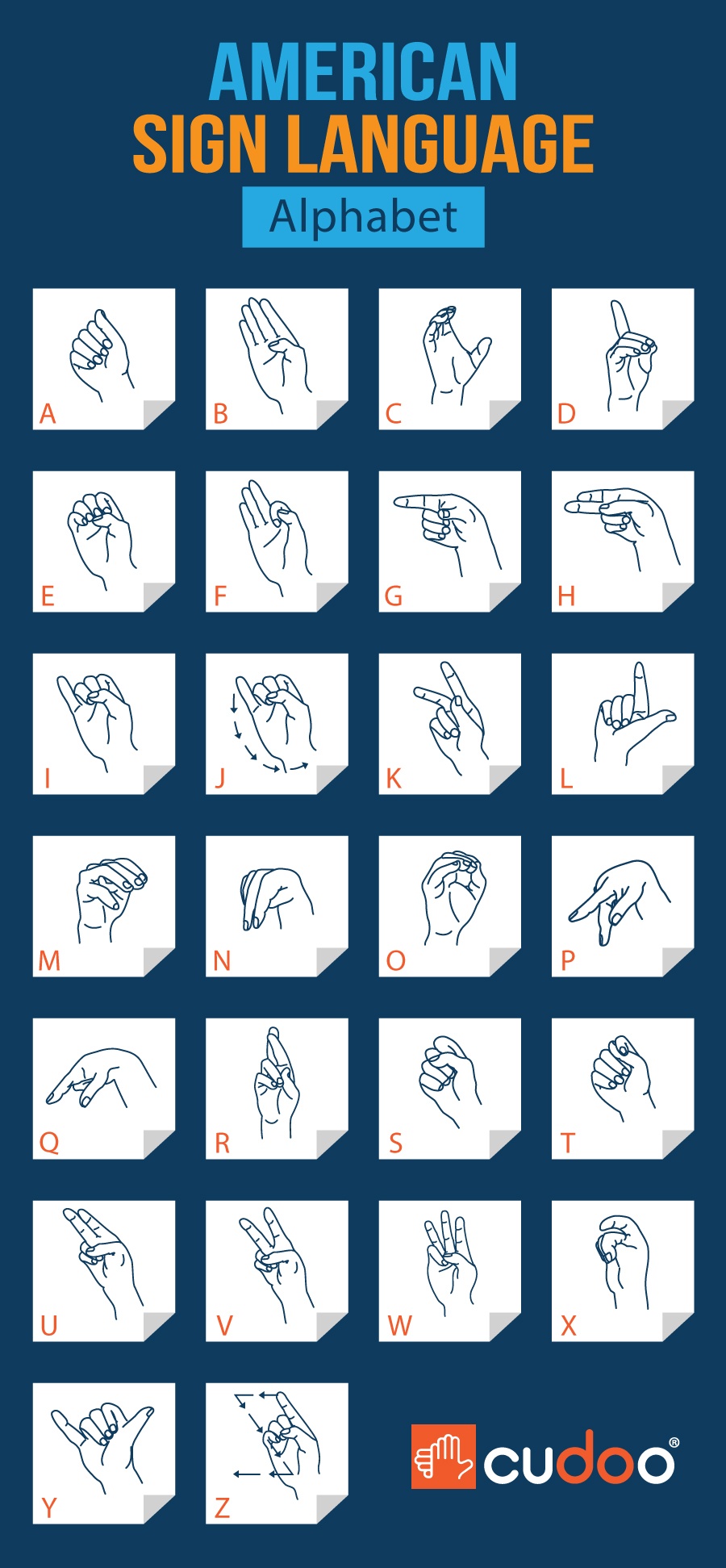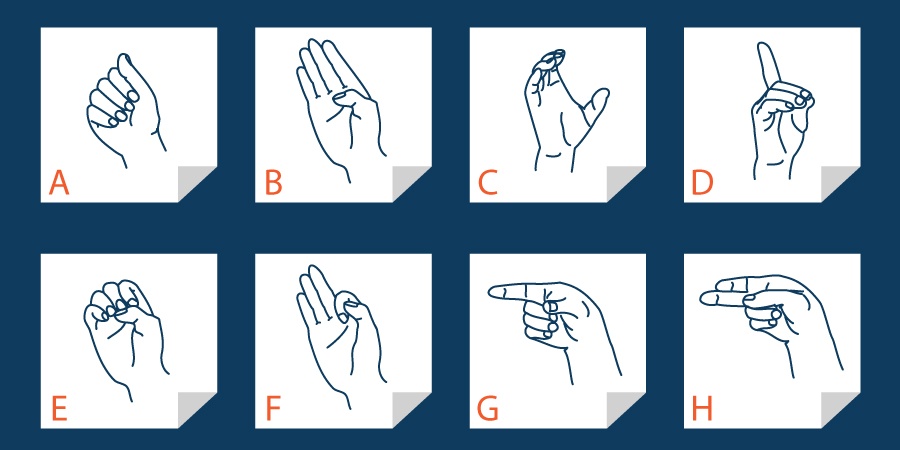What is American Sign Language (ASL)?
American Sign Language or ASL as it’s popularly called by its acronym, is a fascinating language and many people have started to see its value and purpose outside the Deaf community. It is a visual language formed by organized hand gestures, body movements, and facial expressions.
Jumpstart Learning ASL with Cudoo's Online Courses
Full lifetime access
Certificate of completion
One time payment
Learning ASL won’t just create meaningful relationships but will provide more job opportunities, as it’s becoming increasingly essential in many workplaces. Its growing popularity highlights the demand for non-verbal communication that enriches confidence in communicating with people in everyday scenarios. The ASL alphabet (a.k.a fingerspelling) is one of the easier challenges when learning sign language and it’s a sign language basic necessary to know in order to succeed.
Note: ASL uses only one hand to form the letters in the alphabet.
Here’s the American Sign Language Alphabet to help you get started in learning ASL:

Any ASL user knows how crucial being able to fingerspell and understand it in return truly is. Fingerspelling is used to spell out words that do not have a sign such as people’s names, countries, cities and brand names. When you’re in the early stages of learning and don’t know sign language phrases, the sign language alphabet can bridge the gap between you and the Hard of hearing person you need to communicate with.
tips for asl fingerspelling
1.) Keep a Steady Hand
Keeping your hand steady will call for less confusion and more conversation. A shaky or nervous hand could have an impact on the integrity of your sign. Your signs are easier to read when your hand is not shaking. In sign language, your hand is your face talking. If you’re struggling to keep a steady hand, try placing your other hand under your elbow to stabilize your hand. Don’t get too used to having that elbow there, though! Should you begin learning more about ASL, many phrases will require both hands!
When you’re beginning to learn sign language and the ASL alphabet it will be difficult to fingerspell but practice will make perfect and your hand will only become steadier as time goes on.
2.) Don’t Bounce Your Letters!
Imagine you’re sitting at a table having a discussion but you’re not hearing that discussion. All you can focus on is the person nodding their head up and down with every syllable. After a while, you might start to get nauseous just from watching them!
This can happen very easily when fingerspelling with the sign language alphabet. When you’re switching between letters, it’s really important to keep your whole arm steady so the person reading your signs doesn’t have to make that bouncing motion with their eyes.
3.) Slow Down!
Slow and steady wins the race, remember? Try not to speed through a word, the person reading your hands need time to process!
Additionally, don’t be afraid to ask a Hard of hearing person to slow down! It’s similar to going to a foreign country and speaking their language which you haven’t quite perfected yet. Most Deaf or Hard of hearing individuals will be understanding and appreciate your attempt at communicating with them, even if it does take a tad longer.
4.) Practice Makes Perfect
Like with anything new you learn, repetition helps us to recall and remember what we have learned. Similarly, with the ASL alphabet, it’s important to practice fingerspelling. You can start practicing with small letter words and as you build your confidence you can move your way up to longer words or even sentences. You can make the experience interactive by practicing fingerspelling with a friend. You spell out the word and they have to guess what it is – provided they know the ASL alphabet too.
Sign Language Dialects
Sign language is not a universal language and varies in different countries and this is mostly influenced by the native language and culture of the country. One would assume that with American Sign Language and British Sign Language (BSL) the alphabet would be the same since both countries speak English, however, this is not true. The American Sign Language alphabet and British Sign Language alphabet are completely different. In ASL fingerspelling is one-handed while in BSL it is two-handed with the exception of the letter C. They both have their pros and cons. With BSL it’s easier to identify the letter but this also means that you need both hands to be free. With ASL you can fingerspell while holding your cup of coffee. There is also the Australian Sign Language (AUSLAN) and the alphabets are quite similar to the BSL.
Learn more about the world of ASL with our online ASL courses and Deaf etiquette guide.
Andrie Steliou
Latest posts by Andrie Steliou (see all)
- 8 Ways to Help Keep Your Child Focused and Engaged in Online Learning - October 19, 2022
- How to Improve Social Intelligence Skills? - May 10, 2022
- How to Improve Organizational Skills at Workplace? - May 6, 2022


